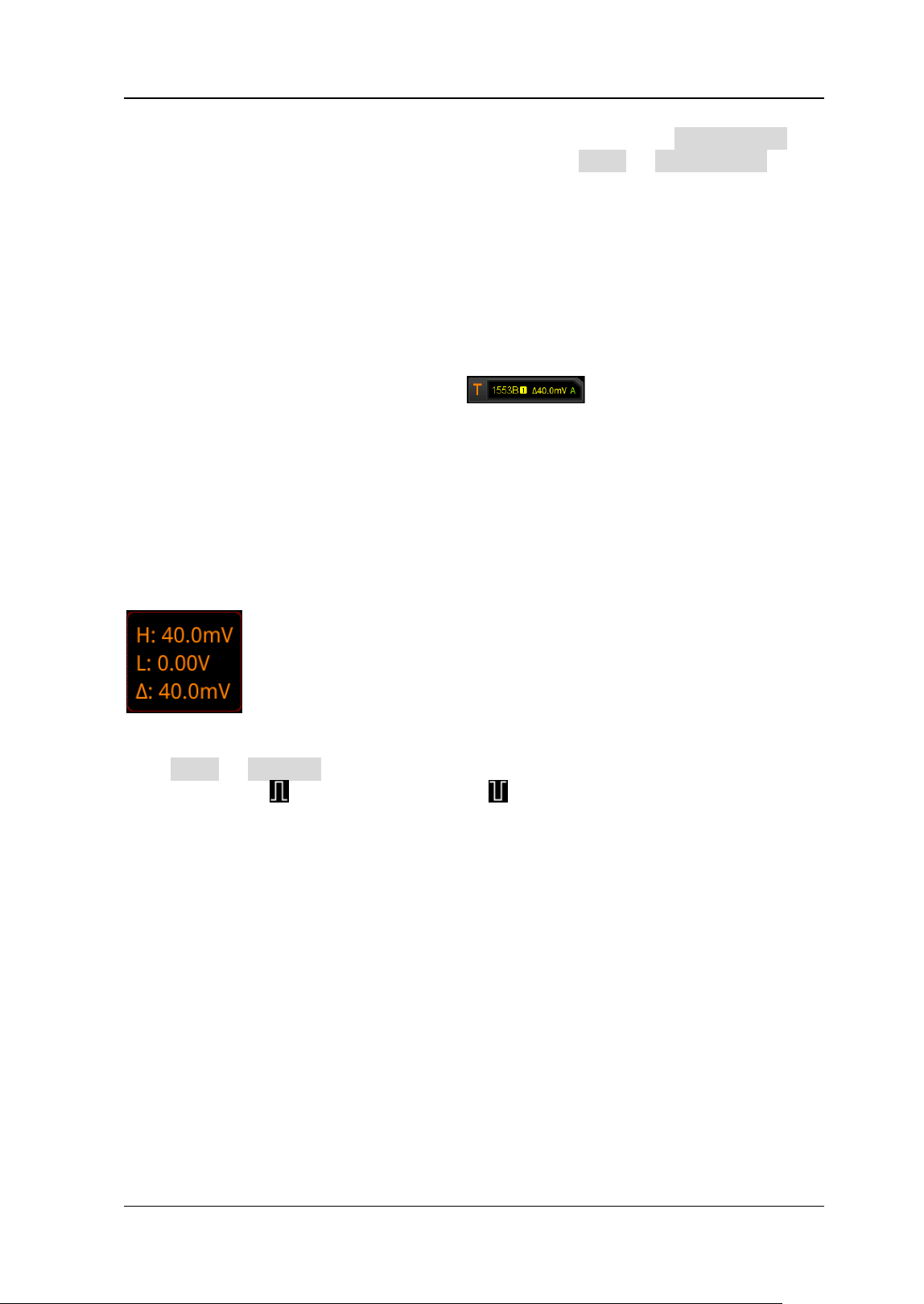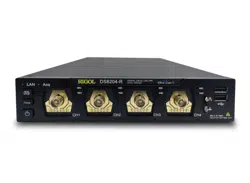Loading ...
Loading ...
Loading ...

Chapter 5 To Trigger the Oscilloscope RIGOL
DS8000-R User Guide 5-51
to correctly trigger the signal and obtain a stable waveform. Click Level Select
(when "Data" is selected for the trigger condition, click More → Level Select), then
select the desired level type for adjustment.
➢ Level A: only adjusts the upper limit of the trigger level, and the lower limit of
the trigger level remains unchanged.
➢ Level B: only adjusts the lower limit of the trigger level, and the upper limit of
the trigger level remains unchanged.
➢ Level AB: adjusts the upper and lower limits of the trigger level at the same time,
and the trigger level deviation (the difference between the upper limit and lower
limit of the trigger level) remains unchanged.
You can click on the trigger setting label
at the upper-right corner of
the screen to adjust the trigger level. During the adjustment of trigger level, two
trigger level lines appear on the screen, and they move up and down with the change
of the trigger level. At the same time, the real-time trigger level and slope
information is displayed at the lower-left corner of the screen (as shown in the figure
below, H indicates the upper limit of the trigger level, L indicates the lower limit of
the trigger level, and △ indicates the trigger level deviation). When you stopping
modifying the trigger level, the trigger level line and the trigger level information at
the lower-left corner of the screen disappear in about 2 s. The current trigger level
deviation is displayed at the upper-right corner of the screen.
Polarity:
Click More → Polarity to select the desired polarity. The polarities available are
positive polarity (
) and negative polarity ( ).
Trigger Mode:
For details, refer to descriptions in "Trigger Mode".
Trigger Parameter Setting:
Set the trigger parameter (noise rejection) under this trigger type. For details, refer
to descriptions in "Noise Rejection".
Loading ...
Loading ...
Loading ...
